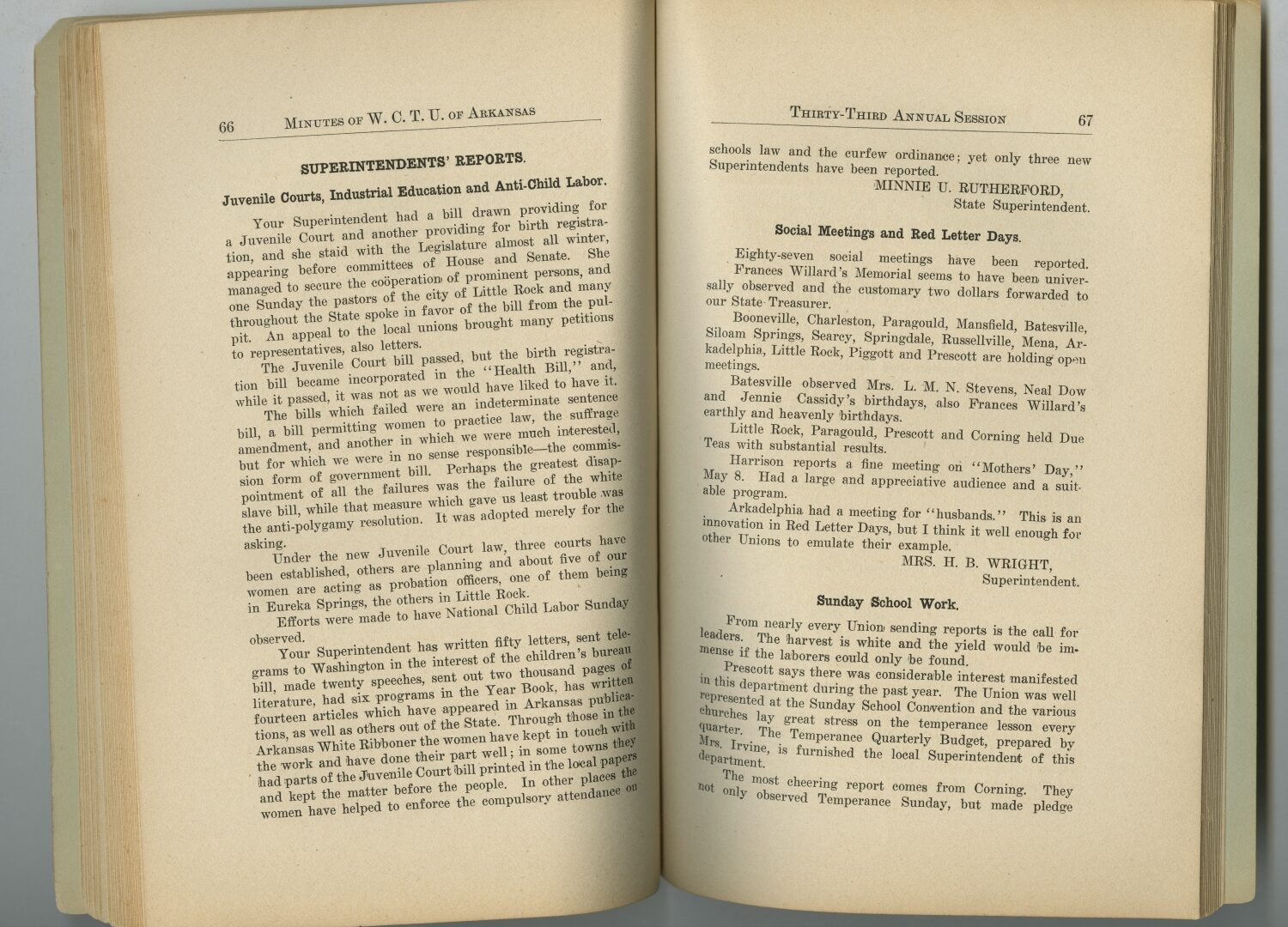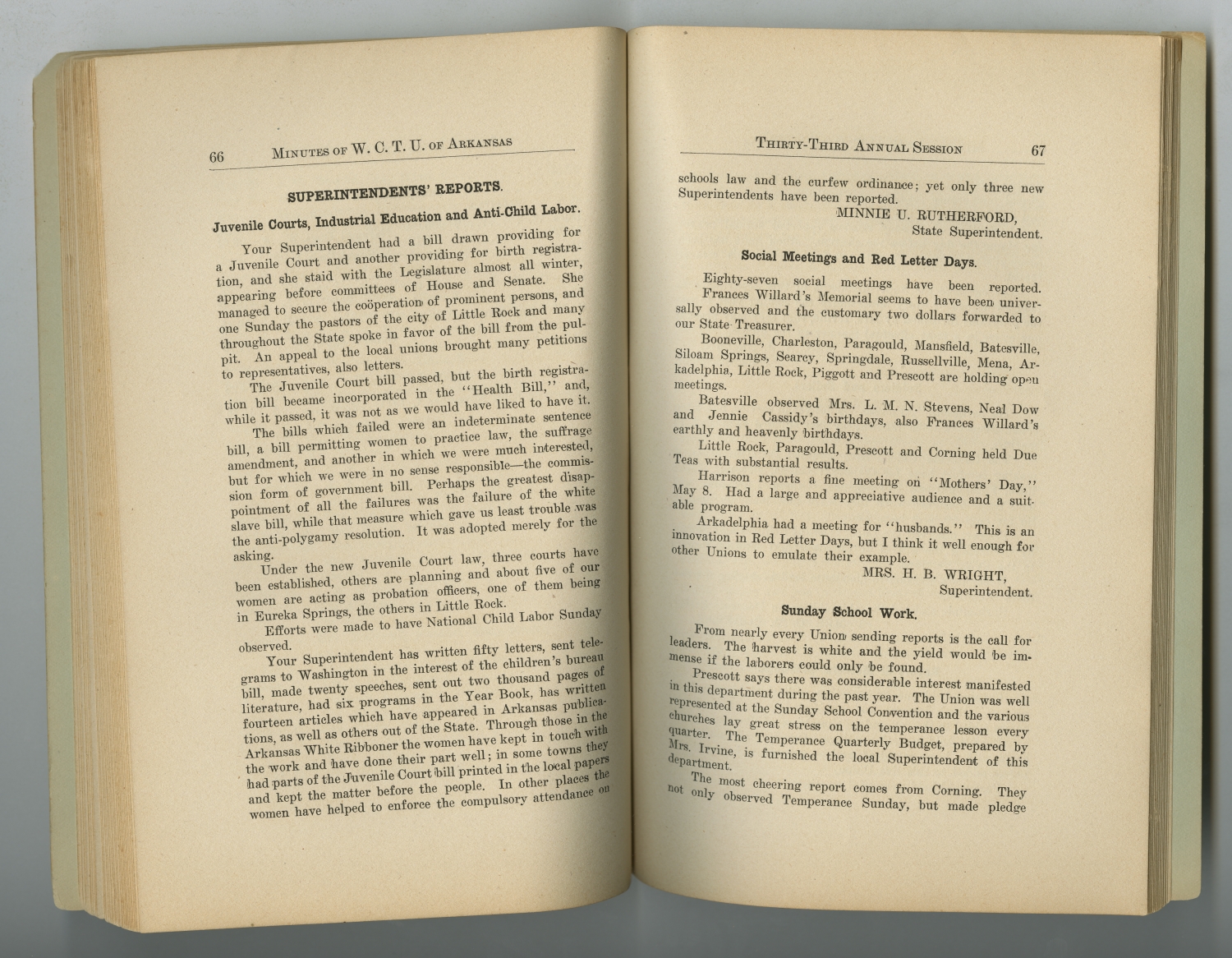Introduction
The Progressive Era in US history, or the period between the 1890s and ca. 1920, was characterized by an unprecedented rise of social reform movements. Progressive reformers were not united by any single cause but rather fought to address a wide variety of social, economic, and political problems with the goal of creating a more equal and just society. Local, state, and national organizations promoted numerous causes that sought to address injustices inherent in the economic, political, and legal structures of the contemporary United States. Examples of progressive causes include fighting against child labor, promoting legislation to ensure safer labor conditions in factories and mines, improving housing in the poorest urban neighborhoods, helping immigrants adjust to life in American cities, supporting free universal public education, fighting government corruption, and even opposing large corporations that created monopolies.
Women and particularly middle-class women lead many progressive causes and organizations. At the time when American women still did not have universal voting rights and their opportunities to serve directly in local or national government were limited, women engaged in politics through grassroots social activism that often resulted in sweeping legislative changes.
One of the most popular causes during the Progressive Era was temperance or a movement that advocated the prohibition of the sale, manufacture, and consumption of alcohol. Although the movement emerged already in the 18th century (1700s) and gained popularity in the first half of the 19th century (1800s), its greatest successes overlapped with the Progressive Era. In 1873, the Woman’s Christian Temperance Union (WCTU), the leading temperance organization in the United States at the time, was created in Ohio and its Arkansas chapter was established in 1879. By the early 20th century (1900s), WCTU activists promoted not only the cause of abstinence from alcohol but, like many organizations of the Progressive Era, engaged in many other social reform campaigns. In this activity, you will examine a 1911 report of the Arkansas chapter of WCTU that illustrates how women engaged in politics and affected political changes before they were able to vote.
Activity Questions
- What was the main purpose of the Woman’s Christian Temperance Union (WCTU)? See “Introduction” for more information.
- What causes, in addition to temperance, did the Arkansas chapter of WCTU support according to their 1911 superintendent’s report?
- What strategies did WCTU activists implement to achieve their goals? How did they popularize their causes and what did they do to push their agenda?
- The report lists some initiatives that were successful and others that failed. What causes gained the support of legislators, all of whom were men, and what causes did not?
- Based on this report, how did American women engage in politics before they were able to vote?
- One of the most powerful and effective strategies applied by WCTU members was to write letters and telegrams to local and national legislators. Think of one social justice cause that you care about and write a letter to a member of a state or national legislature in support of the cause.
- The temperance movement was one of the most popular movements in US history. Temperance was also one of few causes that attracted the support of women from all walks of life – rich, poor, urban, rural, educated, and those who never went to school. Why do you think the temperance cause was so popular in the United States and especially among women?
Primary Sources
To learn more about the primary sources featured in the activities above, click the following links:
Arkansas Social Studies Standards
Arkansas History, Grades 7 – 8
- Strand: History
- Content Standard 7: Students will examine the impact of historical events and people on the development of Arkansas
- H.7.AH.7-8.5 Discuss social, economic, and political reforms of the Progressive Era in Arkansas from multiple perspectives using a variety of sources
- H.7.AH.7-8.9 Examine social and cultural transformations in Arkansas
- H.7.AH.7-8.11 Construct historical arguments about the contributions made by various political and military leaders in Arkansas
Arkansas History, Grades 9 – 12
- Strand: Era 4: Early 20th Century 1901-1940
- Content Standard 4: Students will analyze factors that influenced the perspectives of Arkansans in the early 20th century.
- Era4.4.AH.9-12.1 Investigate social, economic, and political reforms of the Progressive Era in Arkansas from multiple perspectives using a variety of primary and secondary sources
US History Since 1890, Grades 9 – 12
- Strand: Era 7: Emergence of Modern America 1890-1930
- Content Standard 2: Students will evaluate social, economic, and political changes in the United States between 1890 and 1930.
- Era7.2.USH.2 Investigate the impact of the Progressive Era using a variety of sources and multiple perspectives
- Era7.2.USH.3 Analyze short- and long-term social, economic, political, educational, and environmental effects of progressivism at the local, state, and national levels
Key Terms
Downloadable Guides and Handouts
We encourage K-12 educators to use History Alive: Virtually! in a way that will best match their classroom needs. The “Exercise” handout includes a complete exercise as featured on this website, the “Primary Sources” handout includes only primary sources used in the exercise, and the “Questions” handout includes analytical questions from the exercise but is editable and can be easily changed to best match students’ needs.
Making a Difference – Exercises


